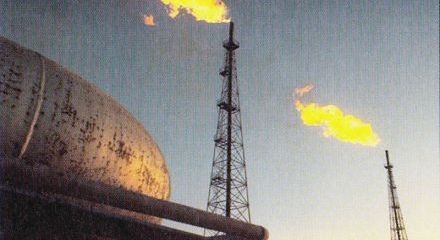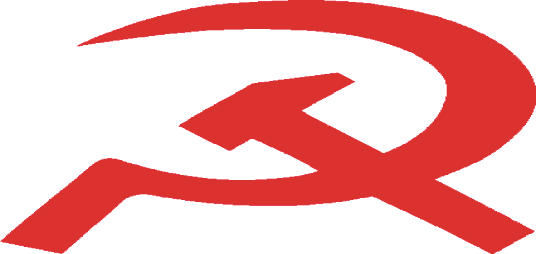26.06.2025

Besieged, battered and badly led
Even before the bombing, Iran was an economic wreck. Years of sanctions and endemic corruption have produced poverty for millions. Michael Roberts describes a failed state
Although Donald Trump had proposed a two-week interval for Iran to negotiate a ‘surrender’ deal, a few days later he joined in the Israeli assault with the USA’s own bombing. The Iranian people are suffering heavily, but this only adds another horrific dimension to the economic crisis in Iran itself and the long suffering of its people.
Iran’s economic performance over the past two decades reveals a persistent pattern of decline. According to the World Economic Outlook report published by the International Monetary Fund in October 2024, Iran’s nominal gross domestic product was estimated at approximately $434 billion. Given a population of nearly 90 million, per capita income is very low - 117th in the world.
Annual inflation is currently around 40%, with soaring food prices and shortages of basic necessities. Approximately 33% of Iranians live below the official poverty line. The youth unemployment rate is near 20%, with half of men aged between 25 and 40 being unemployed and not actively seeking work. Over the past two decades, one of the most pressing structural issues facing Iran has been its inability to generate sufficient employment opportunities, despite a young and growing population. Millions of university graduates remain excluded from the labour force, as there is no work for them.
Energy crisis
In the last year, despite a wealth of fossil fuel reserves, the country has faced a severe energy crisis, with an electricity shortfall of 50% of its total generation capacity,1 resulting in production losses estimated at 30%-40%. The depletion of water resources has meant that major dam reservoirs supplying Tehran have reached critically low levels, at just 7% of full capacity.
How has the Iranian economy been reduced to such low levels in a country with many natural resources and a relatively well educated workforce? The answer is twofold: first, it is the result of the failures of successive corrupt regimes, starting with the CIA’s 1953 coup against Iran’s elected prime minister, Mohammad Mossadegh, to install the pro-imperialist Pahlavi dynasty under the shah, who ruled as absolute monarch for two decades; and then, of course, the Iranian revolution of 1979 eventually installed a clerical autocracy supported by a military elite that owns and controls large sections of the economy.
The second reason is the unending efforts of the imperialist powers who used to rule Persia to weaken and strangle independent economic development - first through the coup of 1953 and then with massive sanctions on Iran’s exports and the blocking of any foreign investment and technology. Using the excuse of the mullahs’ funding and support for religious guerrilla forces like Hamas in Palestine and Hezbollah in Lebanon, and for Bashar al-Assad’s (now overthrown) government in Syria, the western powers have done everything they can to weaken and destroy the living standards of the Iranian people. The loss of income from sanctions is estimated at an accumulated $12 trillion over the last 12 years of sanctions.
Iran is a failed capitalist state because of this. With 10% of the world’s proven oil reserves and 15% of its gas reserves, Iran could be an “energy superpower”2 like Saudi Arabia. But, because it has a regime in power that is anathema to Israel, the Sunni sheikhs and the west, it has not been allowed to develop. The failure of the regime both under the shah and then under the mullahs is revealed by the movement in the profitability of Iranian capital over the decades.
The global economic crisis of the 1970s saw a sharp fall in profitability, laying the economic basis for the failure of the Pahlavi dynasty and its overthrow. However, the mullahs were unable to turn things around at all until the oil price spurt of the late 1990s. This commodity boom came to an end in the 2010s and profitability dropped again.
The Iranian economy expanded from a very low level in the golden age of growth in the 1960s, but then in the late 1970s the economy sank under the shah. It was no better during the tumultuous period of the 1980s under the mullahs, as low oil prices set in. Growth picked up a little in the 2000s, when oil prices rose. But since 2010, with lower oil prices and increased sanctions, there has been stagnation.
Oil proceeds represent about 18% of GDP and the hydrocarbon sector provides 60% of government revenues and 80% of the total annual value of both exports and foreign currency earnings. So everything depends on the price of oil: a $1 drop in the price of crude oil on the international market reduces Iran’s oil revenues by $1 billion! Despite sanctions and lack of investment, Iran manages to export about 1.5 million barrels of crude oil per day and another 1 million per day in petroleum products.
Military crisis
But these revenues are sucked dry by the demands of the mullahs and the military. The combined budgets of the large religious foundations called bonyads3 are 30% of total government spending. The Islamic Revolutionary Guard Corps (IRGC) controls about one third of Iran’s economy through subsidiaries and trusts. The IRGC has over one hundred companies with an annual revenue of $12 billion. It gets the bulk of major infrastructure projects. In 2024, the IRGC received around 51% of all oil and gas revenues.
Iran has been forced to spend hugely on the military - partly to defend the regime from the west and Israel, but also partly to sustain the military elite that keeps the mullahs in power. The most costly of Iran’s defence expenditure is its nuclear programme, approaching a cumulative $500 billion that could have been spent productively on technology and on raising wage incomes. As a result of this nuclear programme, aimed as a deterrent from attack by Israel and the west, sanctions have led to the disappearance of inward foreign investment to help develop the economy.
The government has zig-zagged between state-directed control and pro-market ‘liberalisation’ in desperate efforts to boost the productive sectors. In 2005, state assets were estimated at $120 billion, but half have been privatised since then. The result is that the economy is drained by the mullahs and the military elite, while there is little or no investment by the capitalist sectors.
Former president Mahmoud Ahmadinejad says 60% of national wealth is controlled by just 300 people - most of whom shift their wealth abroad to buy foreign real estate and/or salt it away in secret accounts. According to the World Inequality Database, the top 1% of Iranians by wealth own 30% of all national wealth and the top 10% own nearly two-thirds, while the bottom 50% own just 3.5%.
Privatisations and the inequalities of wealth have produced a ruling elite that is split between the religious fundamentalists backed by the military and a business faction that seeks accommodation with the west. These latter ‘reformists’ are pro-market and want to get the sanctions lifted, whatever the concessions to the west. If the mullahs fall, they will be quick to move to join the imperialist camp and seek peace with Israel on the latter’s terms, just as the Arab sheikhdoms have done.
Neither wing of the elite is interested in improving the conditions of Iran’s working class. An average worker’s wage is around $150-$200 a month, with many leaving the small towns, where poverty reigns, seeking work in the big cities. The reality is that average incomes have hardly budged since the 1980s.
Before the twelve-day war, labour unrest had been rising, as workers demanded higher wages to keep up with inflation. The High Council of Labour recently proposed a living wage benchmark of 23.4 million tomans, but workers argued that the real cost of living is at least 29 million tomans. The government’s proposed minimum wage of 14 million tomans has sparked outrage, as it is far below the poverty line. According to the state-run Iranian Labour News Agency, a petition demanding a 70% wage increase had garnered over 25,000 signatures from workers. Ali Moqaddasi-Zadeh, head of the Islamic Labour Councils in South Khorasan, warned last February: “With a 23 million toman living cost estimate, workers will be forced into slum living and homelessness. Next year will be one of extreme inflation and hardship unless the government takes action.”4
Housing crisis
The housing crisis further compounds the problem, with 45% of household incomes spent on rent. Workers report that even renting a single room is becoming unaffordable. With inflation accelerating, even staple foods cannot be paid for. The cost of poultry has forced citizens into long queues to buy affordable chicken in many cities. Iran’s food inflation has surged to over 35%. State-controlled media have been reporting long bread lines in major cities, reminiscent of wartime rationing. Many bakeries have been forced to shut down due to rising flour and ingredient costs.
In the first half of this year, Iran’s economy continued to stagnate with a struggling energy sector, a rapid depreciation of the national currency and an inflation rate exceeding 40%, causing a severe decline in purchasing power.
Michael Roberts blogs at thenextrecession.wordpress.com
